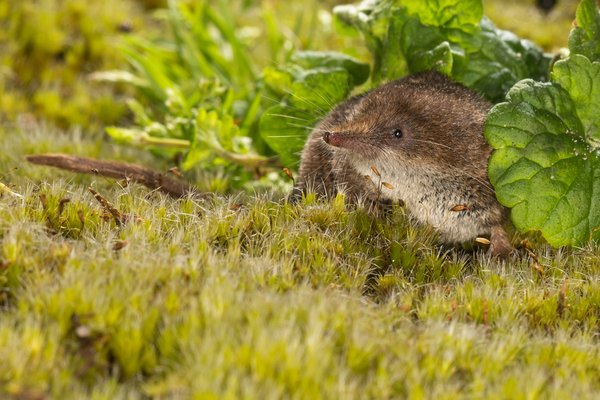Shrews are small mammals that resemble mice but aren’t related to rodents. There are 385 screw species, distributed all over the world. The most common shrew in North American is the Northern short-tailed shrew (Blarina brevicauda). Shrews are very territorial and may occasionally behave aggressively toward pets or humans.
Shrews are unusual creatures. They’re very small, but they can be very aggressive. They use echolocation to find their way around like bats, even though they can’t fly. They’re omnivorous mammals, but they use venom to immobilize prey, like a snake! We don’t blame you for feeling a little intimidated by shrews--especially if you don’t know much about them! To counteract that fear, we recommend learning a bit about the little weirdos. Here’s what you should know about the shrews near you, including how to keep them from causing you too much trouble:
What are shrews?
Shrews are small, terrestrial species of mammals in the order Eulipotyphla. Most shrew species resemble mouse or rat-sized rodents with short grey or brown hair, small tails, and prominent snouts. Despite their rodent-like appearance, however, shrews are actually more closely related to hedgehogs and moles. Compared to mice, shrews have much longer, more prominent snouts, longer and sharper teeth, hairless paws, and smaller eyes.
The most common shrew in the eastern and midwestern US is the Northern short-tailed shrew (Blarina brevicauda). Despite being only 3 to 4” long and weighing only 1 ounce, Northern short-tailed shrews are the largest shrew in North America. They have stout bodies, brown or grey fur and white underbelly fur, prominent pink snouts, and very small eyes. Northern short-tailed shrews have very poor hearing and eyesight, and navigate via echolocation (seriously!) and touch.
Where do shrews live?
Shrews are very common mammals. There are 135 confirmed species of shrew, and different species live in different ecosystems all over the world. Most shrews prefer to live in shaded forests and grasslands, but they thrive in many other environments, too. Shrews live underground in burrows they dig through topsoil, leaf litter, or snow.
Shrews are solitary mammals, and tend to be very territorial. Their home range generally includes several acres around their burrow. Shrews mark their territory with scent glands on their belly and will defend it from other shrews ferociously. Shrews only interact during mating seasons, when they will allow their respective territories to overlap. During mating season, shrews will build elaborate mating nests by combining burrows.

What do shrews want?
Many shrew species heart’s beat 800 to 1000 times per minute. To keep up with this energy level, shrews have extreme metabolisms and must keep eating constantly. Many shrews can eat up to 3 times their own body weight in a single day. Consequently, shrews think of pretty much nothing except their next meal. Shrews will live anywhere as long as they can find something to eat whenever they need it.
Lucky for them, shrews are opportunistic, omnivorous foragers. That means they’ll eat pretty much anything, including vegetation, nuts and seeds, insects, or smaller mammals. Even though they aren’t picky, however, shrews do prefer live food to plants or carrion. They will actively hunt insects, salamanders, snakes, mice, frogs, and other shrews. Shrews use their unique venom glands to inject venom into their prey. Northern short-tailed shrews tend to make their home range in areas where they can consistently hunt.
When are shrews a problem?
During warm months, shrews may establish home territories near your property and burrow into your lawn. Mole burrows are quite narrow and small compared to larger burrowing mammal burrows, but they can still damage plants. If a mole is living near you, you may smell a skunk-like odor. Shrews secrete this odor to mark their territory. It will be especially pungent if the mole gets inside. Like rodents, shrews may occasionally attempt to enter homes during winter.
Inside homes, shrews become a problem because of their secreted odor and their feces. Shrews eat constantly, which means they also… produce waste constantly. They’ll also eat stored food and other products if they can’t find live prey. Shrews may also behave aggressively if they perceive a challenge to their territory. If cornered or threatened, a Northern short-tailed shrew will bite a human or pet. Shrew bites and the venom they contain aren’t dangerous to humans, but they are painful.
How can I keep shrews away from my home?
Shrews are the same size as rodents, and they’ll use many of the same tricks to get inside homes. They frequently squeeze through gaps and cracks in window frames after falling into window wells while burrowing. They may also find cracks in baseboarding or foundation while sneaking through vegetation near your home or chasing prey. Outside, shrews build their burrows around pre-existing cover like decks, porches, gaps beneath sheds, or logs.
Finding and blocking off common rodent access points is the best way to keep shrews out of your home. Repair damaged window and door frames, and replace worn out weatherstripping. Seal cracks and gaps in frames, baseboard, and foundation with caulk or steel wool. Outside, try to give them as little cover as possible. The more exposed the shrew, the less comfortable they’ll feel hunting on your property. Restrict their access to shelter near you by blocking off the undersides of porches, decks, and sheds.
Shrews seem strange and a little scary, but ultimately, they’re a perfectly normal part of our ecosystem. In fact, in their proper place, they’re quite helpful as pest hunters! You shouldn’t be afraid of shrews, but you shouldn’t tolerate them near your home, either. We can help with that.
If you have a shrew problem, give Varment Guard a call anytime. We can remove shrews quickly, safely, humanely, and permanently. You won’t have to deal with their stink, their tunnels, or their teeth again.






